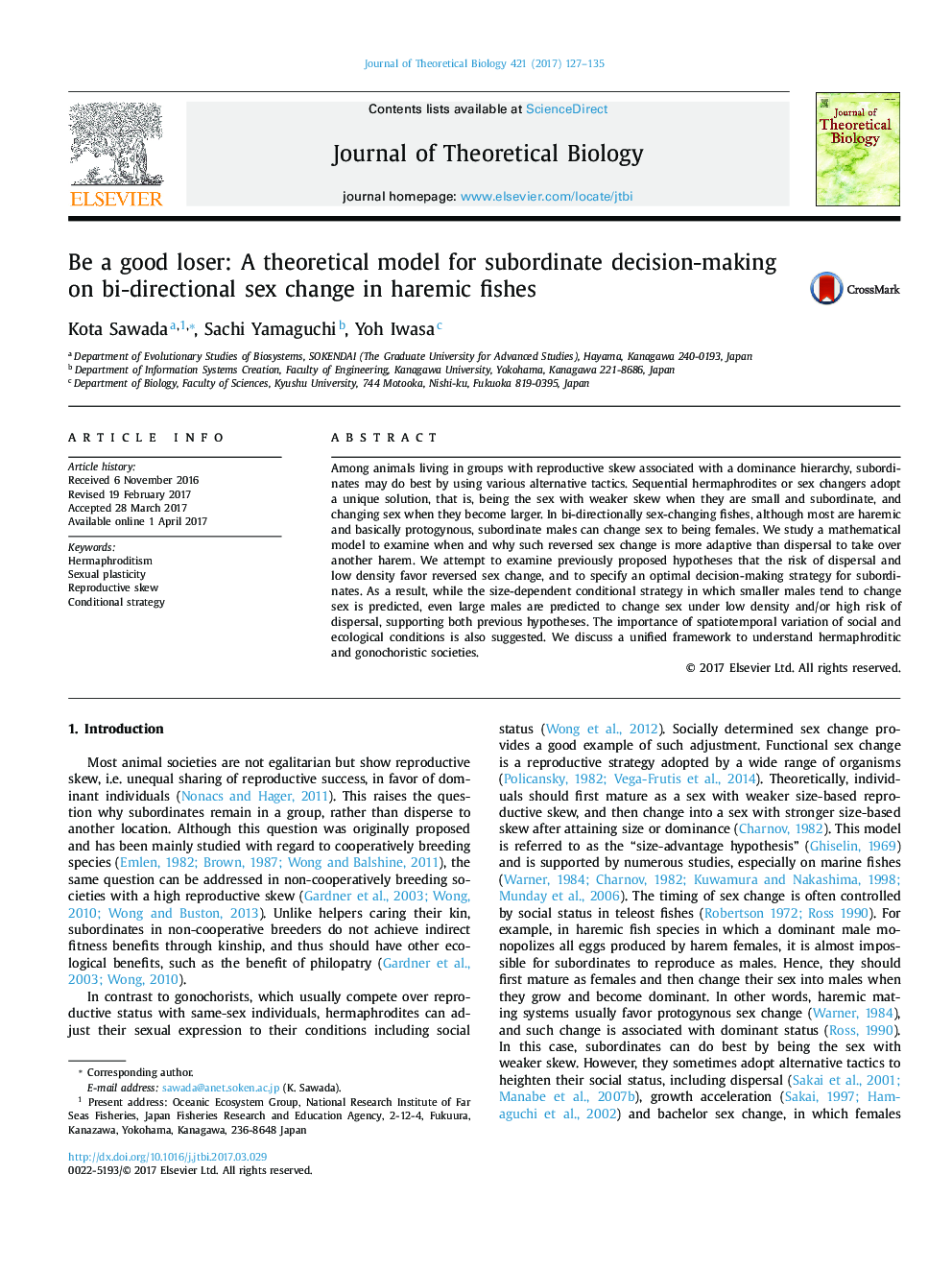| Article ID | Journal | Published Year | Pages | File Type |
|---|---|---|---|---|
| 5760026 | Journal of Theoretical Biology | 2017 | 9 Pages |
Abstract
Among animals living in groups with reproductive skew associated with a dominance hierarchy, subordinates may do best by using various alternative tactics. Sequential hermaphrodites or sex changers adopt a unique solution, that is, being the sex with weaker skew when they are small and subordinate, and changing sex when they become larger. In bi-directionally sex-changing fishes, although most are haremic and basically protogynous, subordinate males can change sex to being females. We study a mathematical model to examine when and why such reversed sex change is more adaptive than dispersal to take over another harem. We attempt to examine previously proposed hypotheses that the risk of dispersal and low density favor reversed sex change, and to specify an optimal decision-making strategy for subordinates. As a result, while the size-dependent conditional strategy in which smaller males tend to change sex is predicted, even large males are predicted to change sex under low density and/or high risk of dispersal, supporting both previous hypotheses. The importance of spatiotemporal variation of social and ecological conditions is also suggested. We discuss a unified framework to understand hermaphroditic and gonochoristic societies.
Related Topics
Life Sciences
Agricultural and Biological Sciences
Agricultural and Biological Sciences (General)
Authors
Kota Sawada, Sachi Yamaguchi, Yoh Iwasa,
